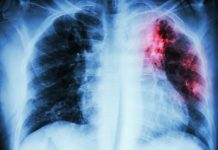Associate medical director of the British Heart Foundation, Dr Mike Knapton explores the fundamentals of heart valve disease
Cardiovascular disease causes more than a quarter of all deaths in the UK and is a major global health problem. The term cardiovascular disease is an umbrella term for diseases of the heart and circulatory system including heart valve disease, which can cause problems throughout the body. At the centre of it all is the heart, a complex organ, which supplies the entire body with the blood, nutrients and oxygen needed to survive.
The heart is made up of four chambers. The two right-sided chambers pump blood to the lungs to oxygenate the blood. This blood is then pumped by the left-sided chambers to the body. To ensure the blood flows in one direction there are valves between the chambers, the mitral and tricuspid valves, and where blood leaves the heart, the pulmonary and aortic valves. Disease or damage to any one valve will disrupt the blood flow in and out of the heart.
Valves can be narrowed, called stenosis, restricting the flow of blood across the valve, or leaky, called regurgitation, allowing blood to flow backwards through the valve. Either way, this places an extra strain on the heart and means it has to work harder to pump blood around the body effectively. The UK’s ageing population means that the number of people diagnosed with heart valve disease is likely to increase.
Causes
There are many causes of heart valve problems, but common causes include being born with abnormal development of the heart, called congenital heart disease, following infection such as rheumatic heart disease, and following a heart attack. Problems are more commonly seen in older people, but heart valve problems can affect anyone at any age. The more common symptoms include breathlessness, swelling of the ankles and feet and exhaustion, though it is possible not to experience any symptoms at all.
Further diagnostic tests will be recommended if someone presents to the doctor with heart valve disease symptoms or when their doctor hears a murmur whilst listening to the heart. Diagnosis of heart valve disease is confirmed by undertaking an echocardiogram, a scan which uses sound waves to build up a detailed picture of the structure and function of your heart.
Management
The management of heart valve disease varies. For some people, no treatment is necessary but the condition should be monitored to ensure it doesn’t worsen. Most valve problems can be managed using medicines or by valve heart surgery. Treatment is dependent on the cause of the valve problem, the severity of symptoms, and the effect that it is having on the heart and circulation. Common medicines include blood pressure lowering drugs such as beta blockers and ACE inhibitors and drugs to reduce the strain on the heart muscle, such as diuretics. Many people with heart valve disease need little or no treatment and can live a normal life for many years.
Heart valve surgery is also relatively common. Valves can either be repaired or replaced. Heart valve repair involves a surgical operation to improve the structure and function of the valve. The two types of replacement valves are mechanical (artificial) valves or biological (animal) valves.
Because an artificial valve can lead to blood clot development around the valve, recipients will have to take blood-thinning medication for life. There are pros and cons to both types of valve and the choice of which valve is optimal will depend on your individual circumstances. The operation involves open heart surgery and is undertaken by specialist cardiac surgeons.
Replacement
Usually, a replacement valve can be expected to last for many years, typically 10 to 20 years. The BHF is funding research in Bristol to find ways to prolong the life of biological prosthetic heart valves. The aim is to develop a new biological prosthetic valve that lasts longer because it is more resistant to mechanical damage and less prone to hardening by calcium build-up. Research like this is vital to the development of new Band improved treatments and surgery for people with heart valve disease.
Some adults who need an aortic valve replacement and are not well enough to have open heart surgery can have a transcatheter aortic valve implantation (TAVI) procedure instead. TAVI is carried out in a cardiac catheterisation laborator and normally takes one to two hours to complete. The replacement valve is introduced and positioned though an artery, often through an incision in the groin, without the need for open heart surgery.
As a result of basic research, improved technology and material science, as well as the development of new surgical techniques, the prospects for someone living with a heart valve problem are excellent and enable people affected to live a full and symptom-free life.
Find out about the BHF’s life saving research at: www.bhf.org.uk/research.
Dr Mike Knapton
Associate medical director
British Heart Foundation











